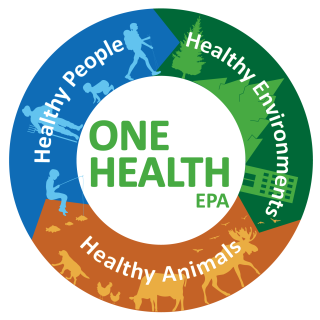Why is One Health Important?
One Health is a holistic approach to advancing human well-being. Humans interact with animals and plants through agriculture and food, outdoor recreation, and shared land, air, and water. Because people, animals, and plants share environments, they are exposed to the same environmental factors. When we improve the health of one, we improve the health of the others; when we protect one, we protect all.
What is EPA's role in One Health?
EPA has long recognized the links between people, animals, and their shared environments. One Health is embedded in the statutes that EPA is directed by Congress to implement. Learn more about One Health and U.S. EPA Statutory Authorities.
In a 2023 report, Transforming EPA Science to Meet Today’s and Tomorrow’s Challenges, the National Academies of Science, Engineering, and Medicine (NASEM) recommended that EPA ‘extensively incorporate a systems-thinking One Environment–One Health approach into providing environmental protection science to address current and future challenges.’
The EPA One Health Approach infographic shows environmental topics where the One Health approach is applicable. EPA is also working with states, Tribes, and local communities to use the One Health approach to meet our shared missions. Read about EPA research in your state.

One Health Federal Definition
The federal definition of One Health is ‘a collaborative, multisectoral, and transdisciplinary approach—working at the local, regional, national, and global levels—with the goal of achieving optimal health outcomes and recognizing the interconnection between people, animals, plants, and their shared environment.'
